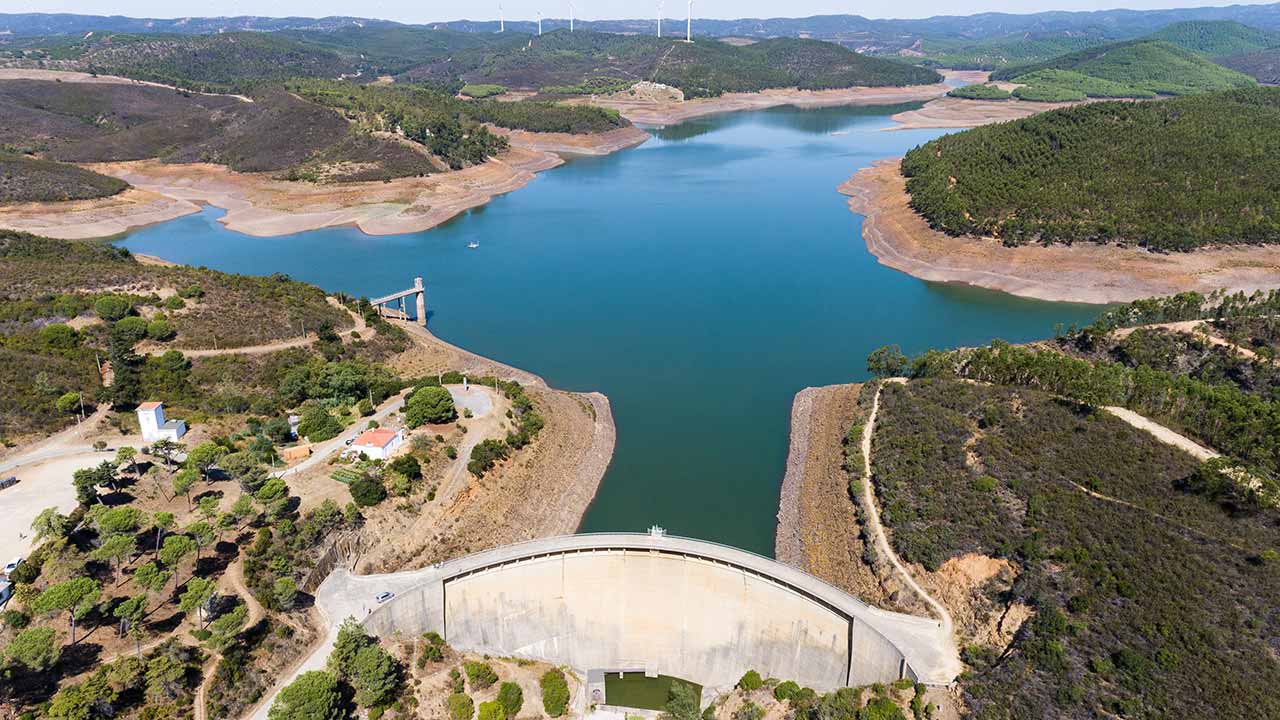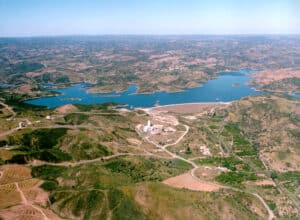The region’s dams may be at 45% capacity, but environmental authorities are still sounding the alarm about the ongoing drought.
The Portuguese Environment Agency (APA) reported on Tuesday that the reservoirs in the Algarve region currently hold 6.6 cubic hectometres (hm3) more water than they did at the same time last year.
The six reservoirs that provide water to the Algarve region have approximately 199 hm3, which is 45% of their total storage capacity. Compared to last week, there was an increase of around 0.8 hm3. According to a report from the APA published on Monday, April 15, the region’s surface reserves have experienced a growth of about seven million cubic meters of stored water in comparison to the same period in 2023.
The data accessed by the Lusa news agency reveal the lowest storage percentages are in the Barlavento (west) region, with the Arade and Bravura dams at 18% and 22%, respectively.
The other two Barlavento dams, Odelouca and Funcho, are at 46% and 55%, respectively, while the two reservoirs in the Sotavento (east) area, Beliche and Odeleite, are at 43% and 51% of their total capacity, respectively.
While Beliche, Odeleite, Funcho, and Arade have less water compared to a year ago, with reductions ranging from 5.1 hm3 at Odeleite to 0.4 hm3 at Funcho, the situation is reversed at the Odelouca and Bravura dams. These two dams have seen an increase of 13.4 hm3 and 3.1 hm3, respectively, compared to the same period in 2023.
Although the rains in the first few months of the year and over the Easter period have replenished reserves in the region, environmental authorities caution that the drought persists in the Algarve. It is crucial to keep implementing measures to manage consumption.
The agricultural sector is the most penalised by the contingency measures adopted to cope with the drought affecting the Algarve, and the irrigators’ associations have already taken a public stand in favour of easing the restrictions on agriculture, allowing producers, especially citrus growers in the western Algarve, to safeguard production.
At the beginning of April, the APA announced that this month, it would “assess the hydrological situation and respective projections to determine the possibility of revising the conditions in force in the region”.
However, it emphasised that any decision would have to “continue to ensure at all times the storage of the volume necessary for a year’s public supply in the different natural sources used”.
The Algarve has been on alert due to drought since February 5, and the government has approved a set of measures to restrict consumption, namely a 15% reduction in the urban sector, including tourism, and a 25% reduction in agriculture.
In addition to these measures, there are others, such as combating losses in the supply networks, using treated water to irrigate green spaces, streets and golf courses or suspending the issue of new water use licences.
Should the current measures prove insufficient to deal with the region’s water shortage, the government has already acknowledged it will raise the level of restrictions and declare a state of environmental emergency or calamity.
Lusa


























